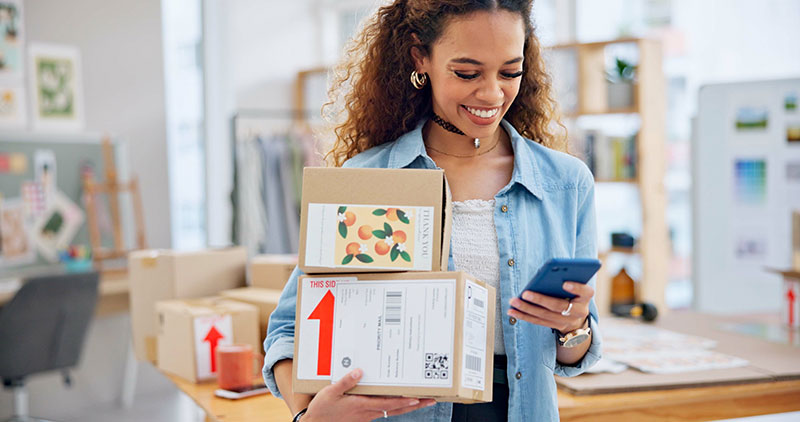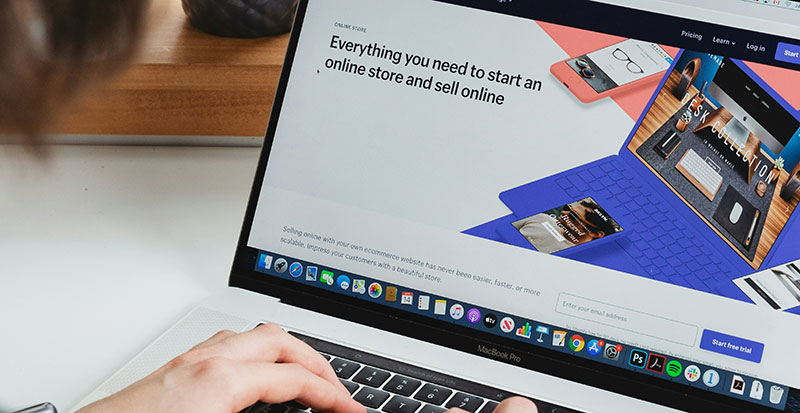You’ve just finished building your business website after countless late nights stressing over the perfect template and getting all your products and services uploaded. But now, what next?
Sure, setting up an online shop is much easier and more convenient than a physical one. But unfortunately, 90% of e-commerce businesses fail within four months. And that failure isn’t surprising, given the fiercely competitive nature of the digital marketplace. With 12 to 24 million e-commerce sites globally, it becomes evident that simply launching a website isn’t enough to thrive in the digital space. This realization underscores that the real work has only just begun.
Without a robust strategy and execution, even the most beautifully designed website with amazing products won’t attract customers organically right off the bat.
Here are some key strategies to elevate your online presence and kickstart your e-commerce success:
- Know your target audience and refine your message
Before you start advertising your store to anyone and everyone, take a step back and define the unique value and experience you’re offering to shoppers. Get crystal clear on who your ideal buyer is and what pain points you’re alleviating for them.
For example, if your online store specializes in personalized fitness gear, your ideal buyer might be passionate about health and wellness and may seek quality, tailor-made products. In this case, your message should emphasize the customization options, highlighting how customers can express their unique style through the products you offer.
Having that specificity prepares you to send a tailored message to your target audience at every touchpoint along their buyer’s journey. It’s best to resist the urge to be everything to everyone because successful e-commerce sites connect deeply with a specific type of buyer.
- Build high-quality backlinks
Stepping into the spotlight and becoming the go-to authority in your niche takes a strategic approach. One way to help you through this and grow your authority and brand visibility is through link building.
Building backlinks has been acknowledged as an integral component in enhancing online visibility and search engine ranking. This constitutes a vital part of the Search Engine Optimization (SEO) toolkit that digital marketers leverage to drive qualified traffic to e-commerce stores. As one of NO BS services and other SEO agencies offering enterprise solutions and similar services, securing high-quality backlinks from reputable websites is beneficial for e-commerce stores.
So, how can you effectively use backlinks to promote your e-commerce business and maximize its potential? Well, here’s a few things you’ll need to do:
- Guest blogging: Reach out to popular blogs in your industry and contribute guest posts with a link back to your store. This can help drive referral traffic and signals to search engines that your site is authoritative.
- Influencer marketing: Collaborate with social media influencers and provide affiliate links to your products. The backlinks from influencers can be very powerful.
- Competitor backlink analysis: Study where your competitors are getting quality backlinks from and aim to earn links from similar websites. These are often industry-relevant sites.
- Broken link building: Find broken links on high authority sites pointing to competitor stores that are no longer working and ask to replace them with your link.
Essentially, high-quality backlinks serve as a digital endorsement, vouching for the credibility and trustworthiness of your website.
- Run PPC campaigns
Pay-per-click (PPC) ads, like Google Ads, allow you to get your brand and offers in front of people the moment they search for relevant terms. When used correctly, PPC can drive a high volume of targeted traffic to your online store. You can utilize PPC campaigns by:
- Researching keywords thoroughly: Identify high commercial intent keywords that are relevant to your products.
- Organizing campaigns around products/services: Create tightly themed ad groups around specific products, product categories or services you offer.
- Creating localized campaigns: If you ship to multiple countries or regions, set up separate campaigns with unique ads that appeal to each locality.
- Designing text, image and video ads: Test a variety of ad formats, including text, responsive display, and video. Emphasize promotions or sales in the text.
- Driving traffic to targeted landing pages: Send traffic to relevant product/category pages or dedicated promotional pages, not just the home page.
The key is to start hyper-targeted, track conversions diligently, and optimize rigorously based on actual sales or lead data. This constantly improves the efficiency of PPC spending.
- Leverage social media platforms
As of October 2023, there are 4.96 billion active social media users worldwide, and continuing to rise exponentially year-over-year on platforms.
While not driving direct sales like search marketing, a social media presence is still crucial for providing sales-nudging touchpoints where buyers engage with and discover new brands.
Are your products visually eye-catching? Promote them on Instagram. More functional or text-based content? Facebook groups and forums focused on your space could generate leads and awareness. Hashtag marketing on Instagram and Twitter organically connects you with potential customers posting about related topics.
Just be sure your website and payment infrastructure are ready for spikes in traffic so you don’t miss out on sales from sudden referral influxes you might not be expecting.
- Consider email marketing
Email is still one of the highest-converting channels for driving repeat business and valuable customer engagement. Based on a 2022 report, global email marketing is anticipated to reach USD$1081.3 million in 2029, with a yearly growth rate of 2.9% during the analysis period. This data shows how email marketing continues to be a formidable force in the digital landscape.
Let’s buckle up and explore the techniques that can elevate your email marketing campaign to new heights:
- Personalize for relevancy
- Send cart abandonment reminders
- Make mobile responsiveness non-negotiable
- Experiment with innovative formats
As you can see, email marketing presents a tremendous opportunity for e-commerce brands to boost repeat purchases and build lasting customer loyalty.
Conclusion

Building an online store takes some serious effort. But now you’re set up for amplification success with this initial digital marketing game plan. Stick with what makes the biggest impact. As you grow and iterate, you’ll figure out which promotional activities provide the highest ROI and double down on those channels. Stay nimble, keep track of meaningful metrics, respond to what’s working and what’s not and you’ll be cruising toward a thriving customer-loved brand before you know it!
- Design Collaboratively: UX/UI Apps Like Figma - April 28, 2024
- Unlocking Capabilities: What is JavaScript Used For? - April 28, 2024
- Creative Collages: Designing with Apps Like PicCollage - April 27, 2024









